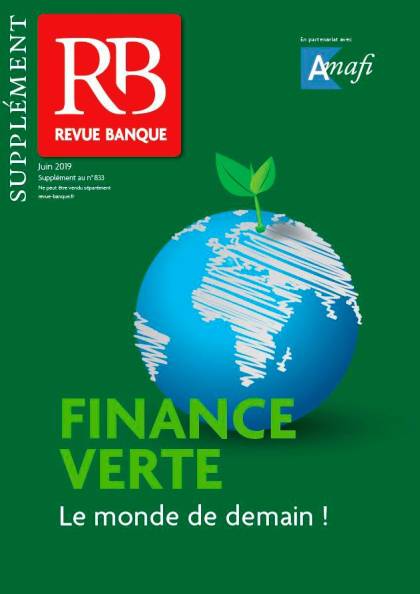Climate change has already begun to affect business, with extreme weather, flooding, wildfires and drought threatening company assets and supply chains. As the environment evolves, companies that improve their energy efficiency and create new products and services will survive and companies that are slow to change will struggle.
While in certain countries, such as France, asset managers are required by law to report on how they include ESG in their investment approach, money managers across the globe are keenly aware they also need to integrate ESG data in their processes, to better manage risk and find opportunities.
In recent years, increased investor appetite and the potential for outsized risk-adjusted returns has boosted total assets in sustainable investment strategies by 11 per cent in Europe, 38 per cent in the U.S. and 42 per cent in Canada since 2016, according to the Global Sustainable Investment Alliance’s 2018 investment review. In Japan, these assets have quadrupled over the same period. At €12.3 trillion in Europe, they represent roughly half of total professionally managed assets in the region.
But while sustainable investing has become a more mainstream concept, investors in the space face challenges. One of the most pressing issues is a lack of access to reliable and consistent ESG data. Investors rely on ESG data to identify which companies may be best positioned to succeed in a sustainable world. However, the lack of consistent reporting standards for ESG data presents a major barrier to the increased adoption of sustainable investing. It requires investors to standardize and interpret unstructured data themselves, slowing down experienced investors and inhibiting new entrants from joining the field. While it may be years before ESG data becomes fully standardized, the investment community can take steps now to access more meaningful and actionable ESG data.
Standardized data allows for easy integration
Businesses reporting their own ESG performance metrics are trying to satisfy increasing investor and stakeholder demand for more and better data. Meeting this demand is especially challenging given the plethora of reporting platforms and requirements and lack of consistent reporting standards. As a result, different data points may be reported across companies in the same sector, and by the same company from one year to the next.
Investors face the challenge of how to evaluate more company-generated data, including a wider array of sustainability reports, documents, filings and websites.
Despite these inconsistencies in the data, organizations such as the Sustainability Accounting Standards Board (SASB) have made immense progress in creating reporting standards. SASB recently
Another challenge with current ESG datasets is that some companies produce – and some data providers publish – ESG information that is only partially measured and accounted for. For instance, one company may report the carbon emissions of its entire business, while another firm may only report the carbon emissions for its headquarters but not for its other locations or operations.
Transparent scoring equals smarter investing
As the sustainable investing movement has evolved, so too has the pervasiveness of ESG scores, which provide a single metric by which to evaluate companies on a range of ESG issues. These scores proved to be a useful metric for easily grading and evaluating investments. However, they are now falling out of favor with investors due to their lack of transparency, among other issues.
Many institutional investors are expressing a desire to move beyond using third-party generated scores, which often reflect not only a company’s reported data, but also the opinion of the analyst. Another issue is that ESG scores are often created using a one-size-fits-all approach that disproportionately weights certain factors towards a company’s overall ESG score. These inconsistent standards are why scores can vary wildly among well-known ESG rating
Recognizing the shortcomings of this black-box approach, sophisticated investors today increasingly prefer raw ESG data because it allows them to customize the datasets for their needs. This is why asset managers are increasingly integrating individual ESG factors into their traditional credit and equity research and portfolio management processes. In particular, quants have shown a great interest in incorporating ESG data into their models since they commonly rely on historical datasets to back test their investment models.
A better approach to this data challenge is one that allows investment management firms to assign their own scores to public companies. In France a significant number of practitioners already collate raw data and research from multiple sources to derive proprietary ESG scores, according to the PRI and CFA institute survey of ESG Integration in
Working with ESG data directly reported by companies can help to meet this need, by allowing investors to weight factors based on their values and the issues they believe will have the greatest financial impact on a sector-, industry-, or company-specific basis. For instance, a gender-focused fund can select firms with strong boardroom diversity, while a manager that feels strongly about social issues can apply greater weight to a company’s labor practices.
Data that caters to all investors, not just the most experienced ESG investors
A growing number of investors are coming to realize the positive correlation between sustainability and financial performance. However, looking at current ESG data may only lead to more confusion. Either investors are overwhelmed by the mountain of unstructured data, or they are drawn to contradictory third-party ESG scores.
As the ESG marketplace grows and expands, forward-thinking investors want to take a more sophisticated approach, while those new to the space are wary of greenwashing. For sustainable investing to continue to grow, all parties need to work together on improvements in the quality, quantity and accessibility of ESG data.









